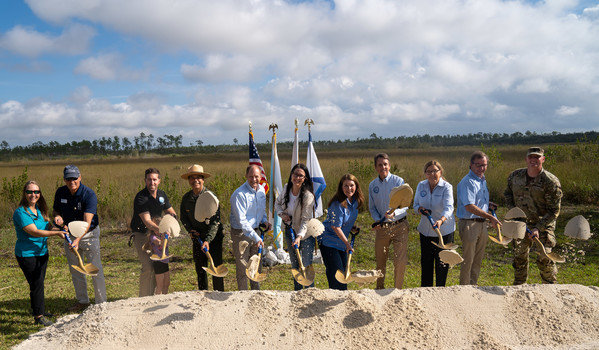On Thursday, Jan. 26, the South Florida Water Management District along with the National Park Service broke...
Join our family of readers for as little as $5 per month and support local, unbiased journalism.
Already have an account? Log in to continue. Otherwise, follow the link below to join.
Please log in to continue |

EVERGLADES NATIONAL PARK — On Thursday, Jan. 26, the South Florida Water Management District along with the National Park Service broke ground on the Taylor Slough Flow Improvement Project within Everglades National Park. This environmental restoration project will allow more clean, freshwater to flow south through Taylor Slough and onto Florida Bay, where it is needed to balance salinity levels and promote ecological health.
“The South Florida Water Management District remains focused on expediting Everglades restoration and water quality projects to protect Florida’s natural resources for future generations,” said South Florida Water Management District Governing Board Member Cheryl Meads. “As we work to reconnect the water flow in the historic Everglades and send more water south, we celebrate this groundbreaking--another step forward for Florida Bay and the Greater Everglades Ecosystem. In the Florida Keys, our economies and communities are built around Florida Bay. Each additional drop of water that moves south nourishes the bay and supports our community. Thank you to our local, state and federal partners including the Florida Department of Environmental Protection, Everglades National Park, U.S. Army Corps of Engineers, Department of Interior, and more who work hand-in-hand with us to advance restoration projects across the region. This is what doing even more now looks like.”
“Bringing more water to Florida Bay is an essential piece of Everglades Restoration efforts,” said Superintendent Pedro Ramos of Everglades and Dry Tortugas National Park. “We are grateful for the collaboration and ongoing partnership with the South Florida Water Management District to accomplish this vital project.”
Taylor Slough is located in the southeastern part of Everglades National Park and was historically a major contributor of freshwater to Florida Bay. The duration, timing and extent of wetland inundation of Taylor Slough’s interconnected wetlands and freshwater flows through Florida Bay are a critical component of the Everglades ecosystem.
In the early 1920’s, surface flow was substantially reduced by the construction of Old Ingraham Highway, which was opened as the first motorway to Flamingo, a small fishing village on the edge of Florida Bay. Old Ingraham Highway acted as a dam, cutting off and redirecting freshwater flow away from Taylor Slough. Additional infrastructure changes, including the building of the regional flood control system known as the Central and Southern Florida (C&SF) Project, have also reduced the flow of water to this important ecological resource.
The Taylor Slough Flow Improvement Project will install up to 18 culverts at nine locations along a 3.2 mile section of Old Ingraham Highway in Everglades National Park to improve the distribution of freshwater flows and restore natural plant communities and wetlands. The project is expected to be complete in Summer 2023.
The project also supports the overall restoration goals of the Comprehensive Everglades Restoration Plan (CERP)-the world’s largest and most ambitious ecosystem restoration effort. CERP is led by the South Florida Water Management District and U.S. Army Corps of Engineers, and implementing CERP involves important partners at the local, state, federal, and Tribal levels.